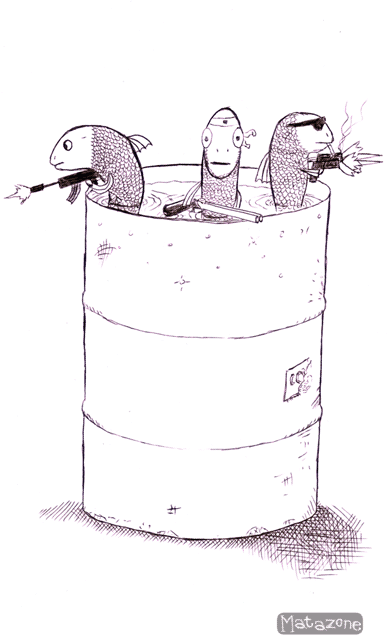 "NEGLIGENT MISREPRSENTATION, NEGLIGENT FAILURE TO OVERSEE AND CONTROL, CONSTRUCTIVE FRAUD, BREACH OF FIDUCIARY DUTIES, CIVIL CONSPIRACY AND VIOLATIONS OF THE NEW MEXICO UNFAIR PRACTICES ACT"
"NEGLIGENT MISREPRSENTATION, NEGLIGENT FAILURE TO OVERSEE AND CONTROL, CONSTRUCTIVE FRAUD, BREACH OF FIDUCIARY DUTIES, CIVIL CONSPIRACY AND VIOLATIONS OF THE NEW MEXICO UNFAIR PRACTICES ACT"There has been some buzz on the blog about pending civil legal action involving jilted depositors. Looks like, as usual, the blog was on to something.
A casual perusal of www.NMCourts.gov/caselookup/app, and using a small variety of names and keywords commonly associated with the former Eclipse Aviation Corporation* reveals:
Case Number: D-202-CV-200911924
SM et al .v. Raburn V et al
Court: ALBUQUERQUE DISTRICT
Filing Date: 10/09/2009
(140 plaintiffs)
Which alleges:
"NEGLIGENT MISREPRSENTATION, NEGLIGENT FAILURE TO OVERSEE AND CONTROL, CONSTRUCTIVE FRAUD, BREACH OF FIDUCIARY DUTIES, CIVIL CONSPIRACY AND VIOLATIONS OF THE NEW MEXICO UNFAIR PRACTICES ACT"
Against defendants (with the results of an internet name search and their probable association with Eclipse):
Vern Raburn...(CEO)
Harold Poling...(BoD)
Kent Kresa...(BoD)
Al Mann...(BoD)
Edward Lundeen...(VP International Sales)
Roland Pieper...(CEO)
Mike McConnell...(President & GM)
Andrew Kamm...(VP Finance)
Mark Borseth...(CFO)
Margaret Billson...(COO)
Todd Fierro...(VP of manufacturing)
John Ricciardelli...(VP Product Support)
Andrew Vitka...(VP/Chief Accounting Officer)
Matthew Malfitano...(Director of sales)
Ricardo Conreras...(legal dept)
This case was filed on Oct 9th; a few days later several others were filed, with different plaintiffs:
Case Number: D-1329-CV-200902423
VF Manufacturing .v. Vern Raburn
Court: BERNALILLO DISTRICT
Filing Date: 10/14/2009
"Breach of Contract"
(2 plaintiffs)
Case Number: D-101-CV-200903325
Opus et al .v. Vern Raburn et al
Court: Santa Fe District
Filing Date: 10/14/2009
"Contract Miscellaneous"
(79 plaintiffs)
Case Number: D-202-CV-200912018
Echo Leasing, et al .v. Raburn, V. et al
Court: ALBUQUERQUE DISTRICT
Filing Date: 10/14/2009
Other Damages
(45 plaintiffs)
While the first suit names (with 140 plaintiffs) features exclusively prominent figures, these last three have a mixture of prominent, and seemingly obscure (nothing came up on the internet in association with Eclipse) persons- I am sad to see difficulty in anyone's life- whether it be financial, health, family, or legal duress. Many involved with Eclipse have already suffered enough duress already. (I would suspect some were just "in the wrong place, at the wrong time").
On the other hand, to read the old Eclipse Press Releases, many of which were patently ludicrous, makes a person wonder, just who knew what- and when.
While it is distressing to contemplate how much cash Eclipse incinerated, WAY past the point of economic viability, at least to a) anyone who has studied the aviation industry for a modest amount of time, and/or b) who doesn't believe in Santa Claus anymore; it is worth pointing out that nobody seems to have profiteered from this misadventure. In fact, just the opposite- it seems there was every effort made to keep the corporation afloat. (And THAT is probably the crux of the legal action- some the desperate actions seem...well, shall we say, desperate).
There were undoubtedly lots of important issues on the line (figuratively, as well as literally); partially assembled aircraft, financial obligations to investors and tax payers, and jobs at Eclipse and at suppliers- so dedication to purpose is to be admired. These are all great things for the aviation community to rally around. But, there comes a point, where trying harder doesn't help if the business plan just isn't viable- at that point, trying harder just digs the hole deeper, and doesn't fill it in. Eclipse just keep digging deeper, and asked depositors (who did not have innate knowledge of the privately held company's finances) to do the same. The moral threshold seems to have been when "customers" were treated as de facto "investors". But that's probably not where the legal line is, as the purchase contracts were probably constructed to indemnify Eclipse in the event of financial difficulty. IANAL (I am not a lawyer, as Dave I would say), but the allegations seem to be related to issue of the depositors, as de facto investors, not being properly represented or informed by the Board of Directors and officers of the corporation./?/! (I think the depositors accepted the technical risk involved with the EA500, and EA400, but were perhaps unaware of the true financial risk ?).
So, it will be interesting to see how much of the Eclipse saga gets revealed "for the record". As one of aviation's favorite disruptive ex-CEOs once said, paraphrasing, "(I) would be happy to respond to critics who aren’t anonymous".
It looks like there will be a day in court, to do just that. (About 266 non-anonymous critics involved- not sure how much "happiness" is involved though, on anyone's part. Let's hope there is, somehow, an outcome that satisfies everyone- a pretty tall order, I fear. The best outcome might be just knowing what went on, and why).
(*For new readers, it is important to point out, this involves the former Eclipse Aviation Corporation, NOT the new Eclipse Aerospace Corporation).



